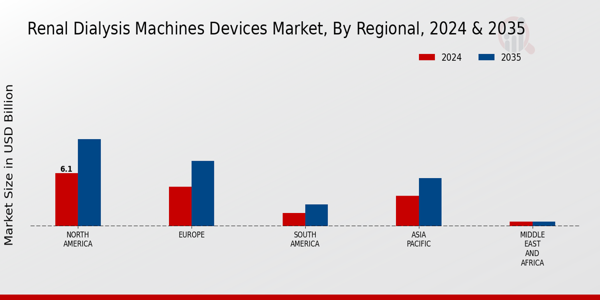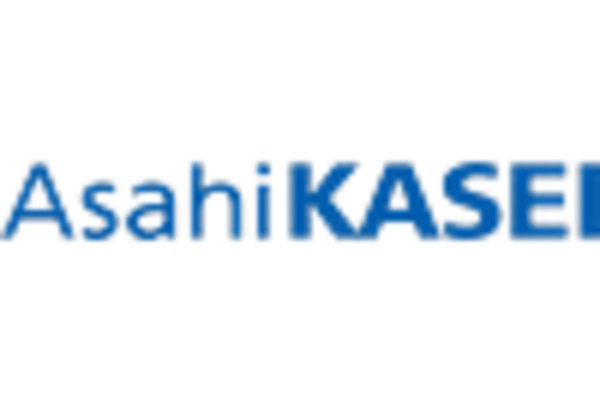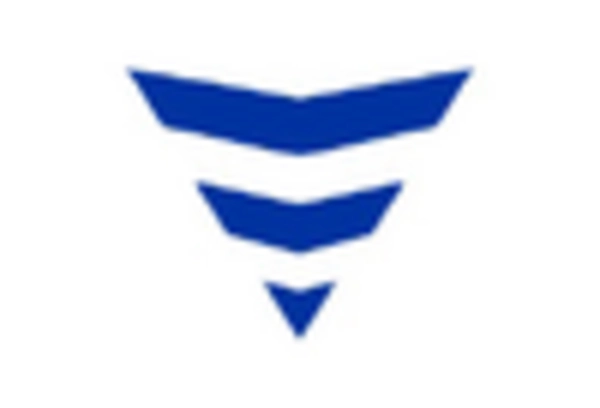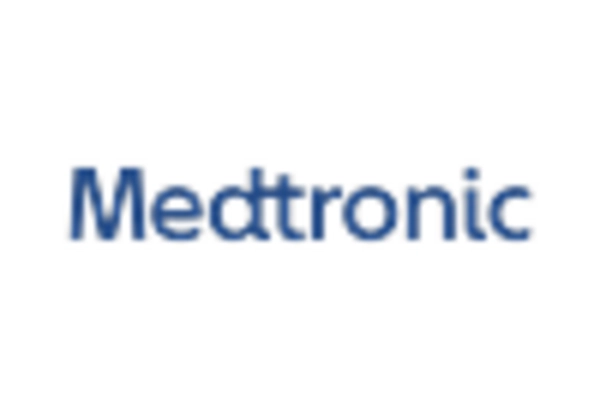Government Initiatives and Funding
Government initiatives aimed at improving healthcare access and affordability are significantly influencing the Renal Dialysis Machines Devices Market. Various countries are implementing policies to enhance the availability of dialysis services, including subsidies for dialysis machines and funding for renal care programs. These initiatives are designed to address the increasing burden of kidney diseases and ensure that patients receive timely and effective treatment. Market data suggests that regions with robust government support for renal care are witnessing accelerated growth in the dialysis market. As funding continues to flow into renal healthcare, manufacturers are likely to benefit from increased demand for their products, thereby driving innovation and competition within the industry.
Increasing Prevalence of Kidney Diseases
The rising incidence of chronic kidney diseases (CKD) is a primary driver for the Renal Dialysis Machines Devices Market. According to recent data, approximately 10% of the population is affected by CKD, leading to a growing demand for dialysis treatments. This trend is likely to escalate as lifestyle factors, such as obesity and diabetes, continue to contribute to kidney-related ailments. The increasing number of patients requiring renal replacement therapy is expected to propel the market forward, as healthcare providers seek advanced dialysis machines to meet the needs of this expanding patient population. Furthermore, the aging demographic is also a contributing factor, as older individuals are more susceptible to kidney diseases, thereby increasing the demand for renal dialysis solutions.
Rising Demand for Home Dialysis Solutions
The shift towards home dialysis is emerging as a significant trend within the Renal Dialysis Machines Devices Market. Patients increasingly prefer home-based treatment options due to the convenience and flexibility they offer. This trend is supported by data indicating that home dialysis can lead to better quality of life and improved clinical outcomes. As healthcare systems recognize the benefits of home dialysis, there is a growing emphasis on developing user-friendly machines that can be safely operated outside clinical settings. The market for home dialysis devices is expected to expand, driven by patient preferences and the need for cost-effective treatment alternatives. This shift not only alleviates the burden on healthcare facilities but also empowers patients to take control of their treatment.
Technological Innovations in Dialysis Equipment
Technological advancements play a crucial role in shaping the Renal Dialysis Machines Devices Market. Innovations such as portable dialysis machines, automated systems, and improved filtration technologies are enhancing the efficiency and effectiveness of dialysis treatments. The introduction of smart dialysis machines equipped with real-time monitoring capabilities is particularly noteworthy, as it allows healthcare providers to tailor treatments to individual patient needs. Market data indicates that the segment of advanced dialysis machines is projected to grow significantly, driven by these technological improvements. As manufacturers continue to invest in research and development, the availability of cutting-edge devices is likely to increase, further stimulating market growth and improving patient outcomes.
Growing Awareness and Education on Kidney Health
The increasing awareness and education surrounding kidney health are pivotal in shaping the Renal Dialysis Machines Devices Market. Public health campaigns and educational programs are effectively informing individuals about the risks associated with kidney diseases and the importance of early detection. This heightened awareness is likely to lead to an increase in screening and diagnosis rates, subsequently driving demand for dialysis treatments. As more individuals become aware of their kidney health, the need for effective renal replacement therapies will rise. Consequently, this trend is expected to create a favorable environment for the growth of the dialysis market, as healthcare providers and manufacturers align their strategies to meet the evolving needs of informed patients.


















Leave a Comment